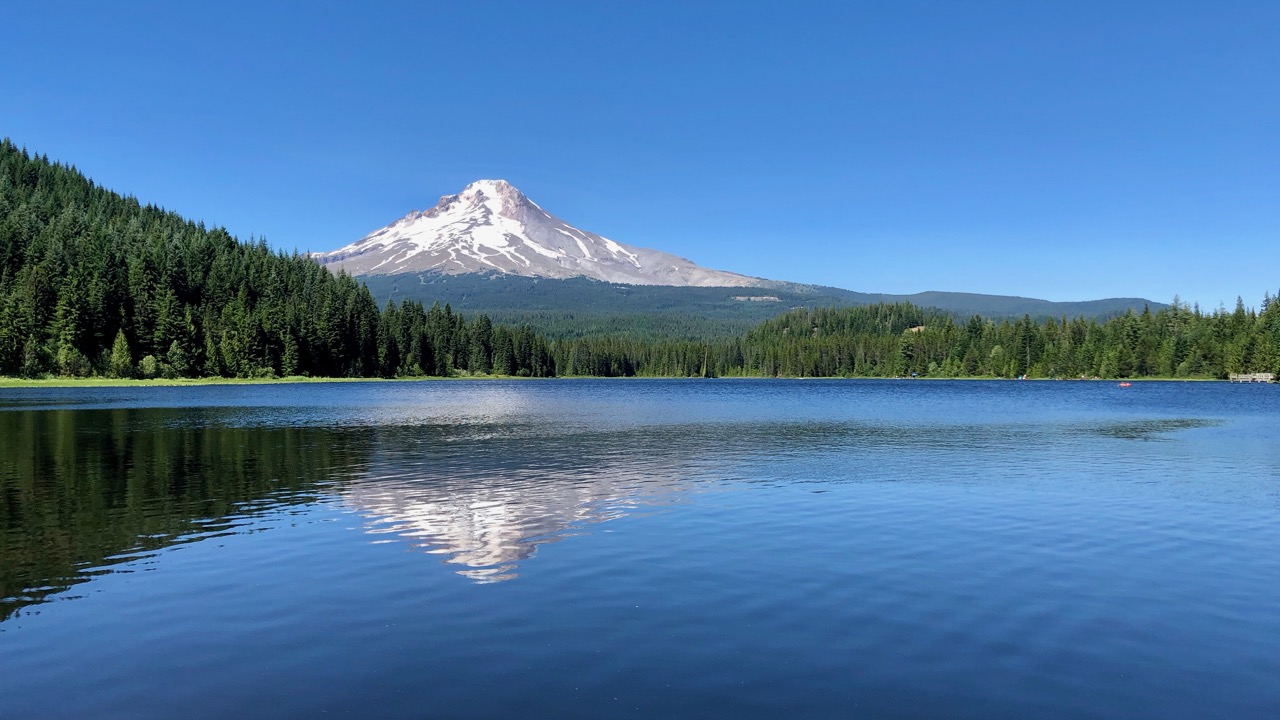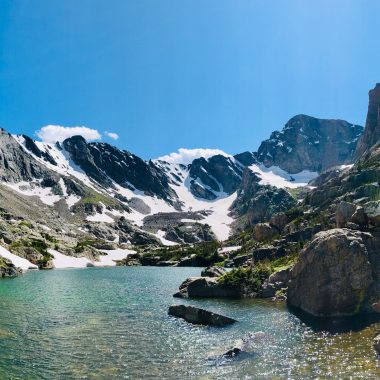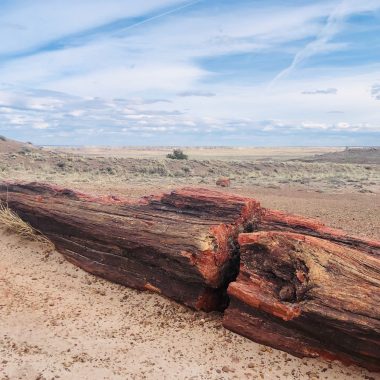From the Painted Hills unit at John Day Fossil Beds Monument it was about a three-hour drive to get to our next Oregon destination– Mt. Hood National Forest. Because of a late start and a shifting itinerary, we could only stay for two nights at the Lost Creek campground near the base of Mt. Hood. I chose Lost Creek because it was the closest campground near the trailhead to Ramona Falls, which is one of the more popular hikes in the National Forest.
Lost Creek is about 18 miles south of Government Camp, the hub of mountain life around Mt. Hood, and requires driving several miles on a one-lane forest road to a remote campground that is situated under a thick pine canopy. Arriving just before dark, I got the van ready for bedtime and took the dogs out for a short walk around the meditative trail located next to Lost Creek campground. The plan was to journey out early the next day to tackle the 7-mile loop up to Ramona Falls.
The next morning we headed out to the Ramona Falls trailhead. From the trailhead, you travel about a mile and then have to cross the Sandy River via a make-shift log bridge. Normally these situations are fine for my dogs, they have great balance and can trot right over log bridges. Unfortunately, this situation had a little twist, in the form of another log bisecting the main log crossing. It created an obstacle just big enough that neither of my dogs could get over or under it, and I wasn’t able to help them up and over without falling into the rushing water. So, sadly, we had to turnaround.

I decided to tackle the Ramona Falls trail the next day, sans puppies. Fortunately everything is pretty close-in around Mt. Hood, so we headed over to Trillium Lake to make the most of what was an absolutely perfect summer day. There is a lovely three-mile loop trail around the lake, with plenty of spots to stop and have a picnic, relax and read a book, or jump in the water for a cool swim.

The road back to Lost Creek passes by the turnoff for Timberline Lodge, which is situated a little over half-way up the side of Mt. Hood at about 6,000 feet of elevation. It was a worthwhile detour, providing a close-up look at the unique shape and texture of Mt. Hood. Mt. Hood is an 11,200ft tall stratovolcano, which are characterized by very steep slopes and layers of hardened lava and ash. Mt. Hood last erupted around 200 years ago and scientists believe it could erupt again sometime this century.

The next day, I headed out again to hike the Ramona Falls Trail. After crossing the Sandy River, you connect with the Pacific Crest Trail and meander through thick pine forest for a few miles before dropping down into a gulley that reveals the magical sight of Ramona Falls. Pictures really don’t do Ramona Falls justice. It looks like something straight out of Lord of the Rings– an 80 foot wall of rock with water cascading down in all directions.

From the falls you can hike back the way you came on the Pacific Crest Trail, or continue on in a loop and take the Ramona Falls trail back. I recommend doing the full loop. The return portion of Ramona Falls trail is its own reward, giving you an opportunity to quietly meditate on the beautiful surroundings, thick canopy of trees, and diverse flora. If you’re moving quickly, you should be able to do the full loop in about three hours. With Ramona Falls checked off the list, that was a wrap on Mt. Hood for this trip. It was time to head for the Oregon coast!






